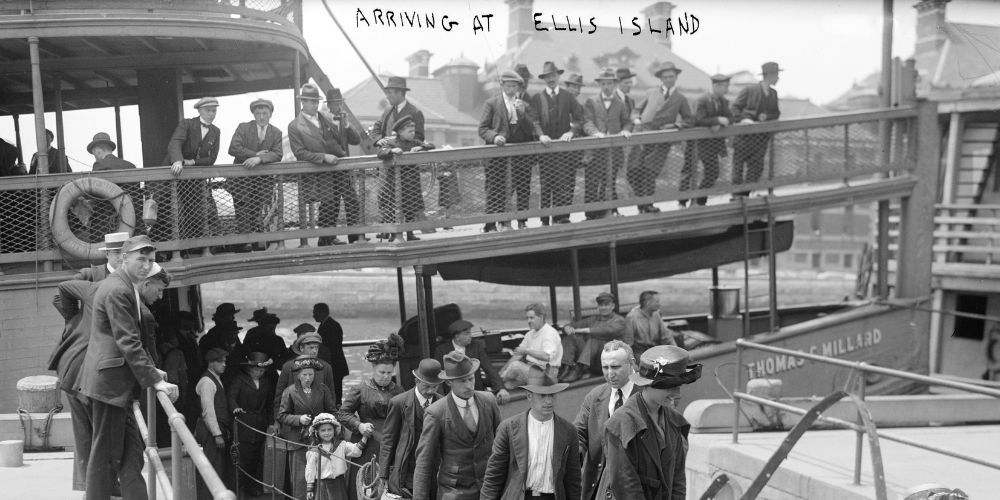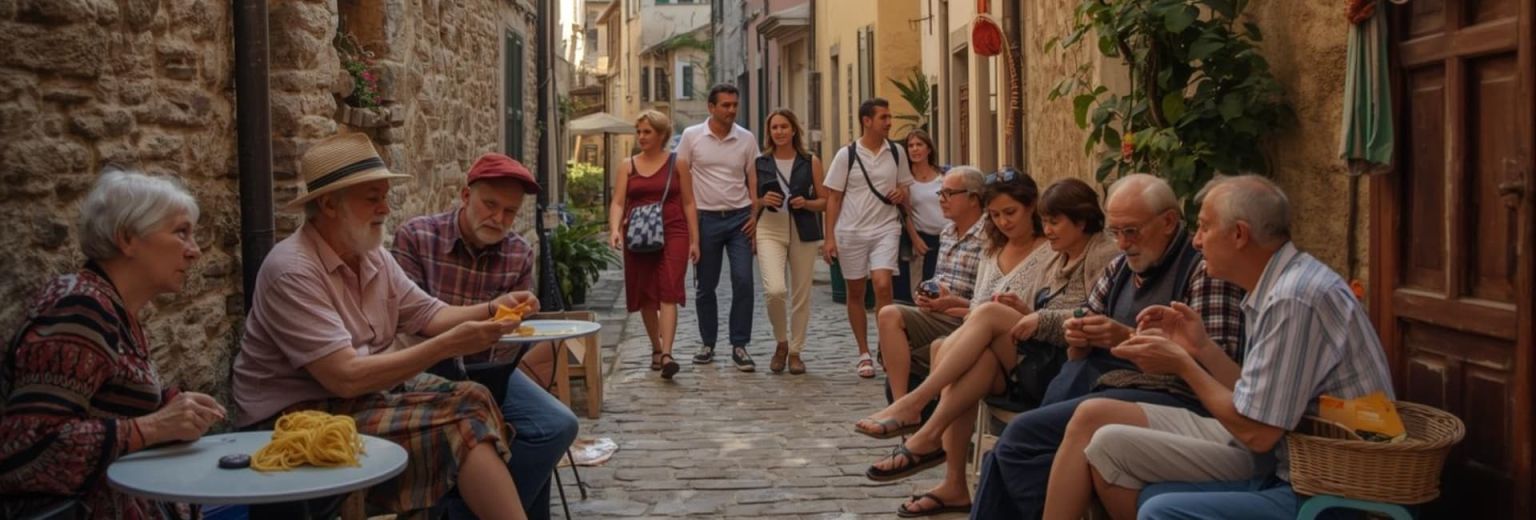It often begins with just a few words typed into Google, a family story remembered or fragments of information passed down from grandparents. Questions naturally follow: Where do I come from? What are my roots?
Discovering the past isn’t always simple, but when the thought arises, it can profoundly shape how we see ourselves and where we’re headed. What begins as curiosity often grows into daydreams: imagining the journey back to the land of your ancestors, and perhaps even turning that dream into reality.
For many Americans, planning a trip to the birthplace of their nonni or parents means embarking on ancestry tourism in Italy.
It’s about more than travel, it’s about walking the same streets, touching the walls of family homes, breathing the familiar air and tasting the flavors that once sustained generations. For some, the journey even leads to pursuing Italian citizenship by descent or imagining what life might be like if they moved back.
For others, it’s simply about reconnecting with the past in order to move forward.

What are we talking about when we say ancestry tourism?

It is becoming very popular and more than just a trend all over the world. Because ancestry tourism is a travel based on reconnecting with the origin place which means discovering the past, traditions and know more about life.
How is ancestry tourism going in Italy? In 2024, Italy launched L'anno delle radici italiane nel mondo (Year of Italian Roots Worldwide) because the goal was to create events and occasions in Italy and abroad to promote traditions, food and italian excellences. Many occasions to help people reconnect to Italy and with their past.
Most of the Italian heritage travelers are from the USA. Tourism is drawing a growing number of Americans back to the villages their grandparents or great-grandparents once left behind. Most of all the places are the small villages of Sicily, Abruzzo, Campania or Calabria.
While ancestry tourism helps visitors reconnect with their roots, it also benefits the towns that welcome them. Small villages gain new energy and visibility, while local traditions and stories are preserved and shared. Beyond personal discovery, this form of travel also supports sustainable tourism, offering an alternative to overtourism and helping revitalize communities off the beaten path.
How can Americans trace their Italian roots?

Today, the web is an invaluable tool for anyone beginning the journey of tracing Italian roots. With the right resources, you can often identify ancestral towns before even boarding a plane for your Italian heritage trip.
Most genealogists recommend starting close to home: collect as much information as possible from family members, old documents, and family stories. From there, online research can help fill in the gaps, though be prepared to open dozens of browser tabs along the way!
Here are some useful places to begin:
- Italian archives & local websites: many regions and municipalities maintain digital archives of birth, marriage, and death records that can be searched online.
- Facebook Groups: almost every Italian town, no matter how small, has a Facebook group. By joining and posting about your ancestors (with names and approximate dates of emigration), you may connect with locals who know your family’s history.
- Specialized Travel Agencies: some agencies organize heritage tours, combining village walks, traditional meals and even lessons in regional dialects to help travelers experience their ancestry firsthand.
Because so many Italian migrants entered the United States through Ellis Island, American databases are also essential resources. They often include details such as ship names, occupations, last residence overseas, and hometowns. Recommended sites include:
- FamilySearch.org
- StatueofLiberty.org (Ellis Island records)
- National Archives and Records Administration (NARA)
- Italian Genealogy Blog
- Italy Heritage
By combining family stories with these resources, Americans can piece together their Italian heritage and plan meaningful trips to the villages of their ancestors.
Why is Italy at the heart of heritage travel?

Few countries have shaped American identity as much as Italy. Between 1880 and 1924, more than 4 million Italians emigrated to the United States. Today, their descendants form one of the largest ethnic groups in the country.
As a result, Italian genealogy trips have grown popular, especially among second- and third-generation Italian Americans eager to rediscover lost connections.
Italy offers not only a wealth of official records, parish registers, town halls, and regional archives, but also an immersive cultural setting where food, language and tradition bring ancestry to life.
Destinations like Campania, Calabria and Sicily are common starting points, since many emigrants left from these southern regions.
Yet, regions in the north, such as Veneto and Friuli Venezia Giulia also draw travellers tracing family lines.
Each journey tells a story: some discover distant cousins, others uncover forgotten family trades, while many simply walk the same roads once travelled by their forebears.
What are popular destinations of the Ancestry Tourism in Italy?

According to Italy’s Ministry of Tourism, an estimated 70 million people worldwide have Italian roots, with around 20 million in the United States alone (U.S. Census Bureau). Most of these family connections trace back to Italy’s smaller, inland villages, particularly in the country’s south, where emigration was strongest.
The regions most often linked to Italian-American ancestry include:
- Sicily
- Calabria
- Puglia (Apulia)
- Campania
- Basilicata
- Molise
- Abruzzo
This isn’t surprising if we recall the great waves of Italian migration to the U.S. between 1880 and 1924, when millions of families left these regions in search of new opportunities overseas.
While southern Italy dominates ancestry tourism, northern regions such as Veneto, Trentino-Alto Adige, and Friuli Venezia Giulia also played an important role in emigration.
Many families from these areas settled in the American Midwest, meaning that for some Italian Americans, tracing roots may lead not to Sicily or Calabria, but to mountain towns and Alpine valleys in the north.
Every Italian genealogy trip tells its own story: some travelers meet distant cousins, others rediscover forgotten family trades, and many simply walk the same streets and piazzas once known to their ancestors.
Did you know? Small villages make up 99% of Italy and many remain off the tourist radar.
FAQs about Italian Ancestry Tourism
What is ancestry tourism?
It is a form of travel focused on exploring family origins, particularly in ancestral towns and regions.
How can Americans trace their Italian roots?
By gathering family records at home, consulting municipal or church archives in Italy, and working with professional genealogists or specialized travel companies.
How can Americans trace their Italian roots?
By gathering family records at home, consulting municipal or church archives in Italy, and working with professional genealogists or specialized travel companies.
About the author
Written on 13/10/2025



Alessia D'alfonso
Ancestry tourism in Italy is inspiring more Americans to travel back to their ancestral villages and rediscover their Italian roots.